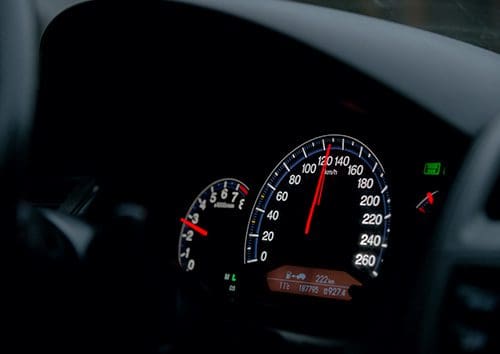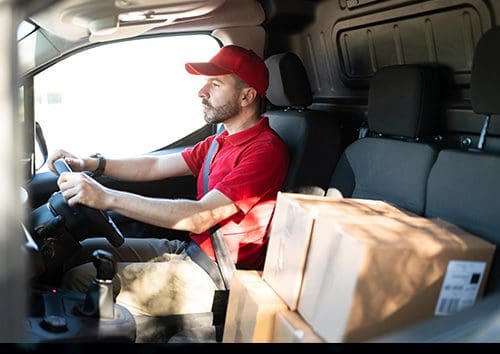- Car finance Car finance
- Motorbike finance Motorbike finance
- Van finance Van finance
- How it works How it works
- FAQs and guides FAQs and guides
- About us About us
- Home
- Blog
- Looking After Your Vehicle
- How to drive a van safely
How to drive a van safely
Updated: Tuesday, 16 May 2023
Getting behind the wheel of a van may seem like a daunting thought, but it doesn’t need to be. There are several key van driving safety tips that every van driver should know, no matter how long they’ve been driving one for.
So, whether you’re a first-time van driver, renting one to move something large or someone who’s been driving a van for years, we think these tips on driving vans safely will come into good use…
Getting behind the wheel of a van may seem like a daunting thought, but it doesn’t need to be. There are several key van driving safety tips that every van driver should know, no matter how long they’ve been driving one for.
So, whether you’re a first-time van driver, renting one to move something large or someone who’s been driving a van for years, we think these tips on driving vans safely will come into good use…
1. Know your van
1. Know your van
Just as you would before driving a car, it’s important to get to know your van. Vans nowadays will have all the features you are used to in your car, from ABS brakes, stability control systems, steering-wheel airbags, sat-nav and sound systems, the list could go on. So, getting to know your van might just be a quicker task than you thought.
We would suggest looking at the following basic controls before you set off:
- Lights
- Wipers
- Heating/AC
- Radio
- Mirrors
- Seat positioning
- Getting into gear

Just as you would before driving a car, it’s important to get to know your van. Vans nowadays will have all the features you are used to in your car, from ABS brakes, stability control systems, steering-wheel airbags, sat-nav and sound systems, the list could go on. So, getting to know your van might just be a quicker task than you thought.
We would suggest looking at the following basic controls before you set off:
- Lights
- Wipers
- Heating/AC
- Radio
- Mirrors
- Seat positioning
- Getting into gear

2. Know your route
2. Know your route
Planning is very important when driving a van for the first time, in weather conditions you aren’t used to, like driving in snow or even driving a van down roads and routes you don’t know. If you get lost or stuck this can increase your stress levels and impact your safety when driving.
Plan your route and make sure there are no low bridges, try to avoid single track country roads, tight bends or even complicated roundabouts on your first few journeys. Use a sat nav or have the main road numbers in your mind to ensure your safety on the way.
Planning is very important when driving a van for the first time, or even driving a van down roads and routes you don’t know. If you get lost or stuck this can increase your stress levels and impact your safety when driving.
Plan your route and make sure there are no low bridges, try to avoid single track country roads, tight bends or even complicated roundabouts on your first few journeys. Use a sat nav or have the main road numbers in your mind to ensure your safety on the way.
3. Loading your van
3. Loading your van
If you overload or poorly load your van it can become very dangerous. Make sure you know the vans maximum load capacity before you start piling things into it. You can find the vans maximum load capacity on the vin plate of the vehicle. This is usually located around the trim of the driver or passenger door opening.
It’s also important to load your van evenly and securely. Keep items as low as possible to lower the centre of gravity of the van and to reduce damaging the load. If you don’t secure items the more likely they are to become damaged, so please make sure you secure anything tall, heavy and valuable.
If you overload or poorly load your van it can become very dangerous. Make sure you know the vans maximum load capacity before you start piling things into it. You can find the vans maximum load capacity on the vin plate of the vehicle. This is usually located around the trim of the driver or passenger door opening.
It’s also important to load your van evenly and securely. Keep items as low as possible to lower the centre of gravity of the van and to reduce damaging the load. If you don’t secure items the more likely they are to become damaged, so please make sure you secure anything tall, heavy and valuable.
4. Watch your speed
4. Watch your speed
Naturally a van is heavier than a car, and you need to be aware of the different ways that driving a van is different to a car. You need to watch your speed and keep your distance as you would in a car, but how heavy a van is when it’s loaded will affect your breaking distance.
A heavy load will not only affect the vans breaking ability but also its acceleration and handling of the roads. If you’re unsure, leave a bigger gap than you think you need just to be safe. And if it’s raining then leave even more space to break.

Naturally a van is heavier than a car, and you need to be aware of the different ways that driving a van is different to a car. You need to watch your speed and keep your distance as you would in a car, but how heavy a van is when it’s loaded will affect your breaking distance.
A heavy load will not only affect the vans breaking ability but also its acceleration and handling of the roads. If you’re unsure, leave a bigger gap than you think you need just to be safe. And if it’s raining then leave even more space to break.

5. Beware of blind spots
5. Beware of blind spots
A vans rear visibility is another difference between them and cars. Therefore, the blind spots will also be different. There is no back window or back rear windows to use to help you see your surroundings, but you will have larger wing mirrors which will aim to do part of that job.
Just be mindful and double check your blind spots before making any manoeuvre in a van.
A vans rear visibility is another difference between them and cars. Therefore, the blind spots will also be different. There is no back window or back rear windows to use to help you see your surroundings, but you will have larger wing mirrors which will aim to do part of that job.
Just be mindful and double check your blind spots before making any manoeuvre in a van.
6. Turning your van
6. Turning your van
Depending on how large your van is you will need to leave more space for turning. Don’t forget there may be more vehicle behind you than you are normally used to, therefore, you need to turn corners with a bigger swing.
We would always advise to think forward, both literally and physically, if you know a tight corner is coming up then slow down and think about any obstacles in your way that might not allow you to turn. If you need to, it’s ok to come to a complete standstill if it means you and other drivers will be safe.
Depending on how large your van is you will need to leave more space for turning. Don’t forget there may be more vehicle behind you than you are normally used to, therefore, you need to turn corners with a bigger swing.
We would always advise to think forward, both literally and physically, if you know a tight corner is coming up then slow down and think about any obstacles in your way that might not allow you to turn. If you need to, it’s ok to come to a complete standstill if it means you and other drivers will be safe.
7. Driver etiquette
7. Driver etiquette
Unfortunately the white van driver has a stereotype, which we’ve seen in our driver perceptions research, and it’s not normally positive. Although it’s a common misconception it does still exist as we’ve seen white van drivers ranked as #3 least favourite driver on the roads.
You can change this stereotype by being courteous to other road users and remaining conscious that your vehicle is much larger than others on the road.
If you are unsure that there isn’t enough space for you and other road users, then slow down and don’t take unnecessary risks.

Unfortunately the white van driver has a stereotype, which we’ve seen in our driver perceptions research, and it’s not normally positive. Although it’s a common misconception it does still exist as we’ve seen white van drivers ranked as #3 least favourite driver on the roads.
You can change this stereotype by being courteous to other road users and remaining conscious that your vehicle is much larger than others on the road.
If you are unsure that there isn’t enough space for you and other road users, then slow down and don’t take unnecessary risks.

8. Parking your van
8. Parking your van
Whether you think you’re great at parking or not, parking a van is a lot trickier than parking your average car.
Whether you are parallel parking on the street or parking in a bay you must remember the length and width of your van. Also consider the turning circle and how much you might need to swing to get into the space.
If you can take someone with you who is able to get out and guide you into a space should you need it, then this would most definitely be advised.
Whether you think you’re great at parking or not, parking a van is a lot trickier than parking your average car.
Whether you are parallel parking on the street or parking in a bay you must remember the length and width of your van. Also consider the turning circle and how much you might need to swing to get into the space.
If you can take someone with you who is able to get out and guide you into a space should you need it, then this would most definitely be advised.
9. Insurance cover
9. Insurance cover
Whatever you are using your van for, you want to make sure it’s protected in the event that something happens.
If you are carrying tools and they are stored in the van overnight, then you might want to make sure you are also covered for these tools (contents) as well as any damage to the van.
Also make sure you have a good breakdown cover and know exactly who to call if this does happen.
It might also be worth you looking at how to keep your van safe from thieves as this could give you further protection.
Whatever you are using your van for, you want to make sure it’s protected in the event that something happens.
If you are carrying tools and they are stored in the van overnight, then you might want to make sure you are also covered for these tools (contents) as well as any damage to the van.
Also make sure you have a good breakdown cover and know exactly who to call if this does happen.
It might also be worth you looking at how to keep your van safe from thieves as this could give you further protection.
We hope you have many miles of safe travels ahead of you!
We hope you have many miles of safe travels ahead of you!
Bringing you tips on buying and maintaining your vehicle to make life on the road less stressful.
More from Moneybarn...
For a better road ahead
Moneybarn is a member of the Finance and Leasing Association, the official trade organisation of the motor finance industry. The FLA promotes best practice in the motor finance industry for lending and leasing to consumers and businesses.
Moneybarn is the trading style of Moneybarn No. 1 Limited, a company registered in England and Wales with company number 04496573, and Moneybarn Limited, a company registered in England and Wales with company number 02766324. The registered address for these companies is: Athena House, Bedford Road, Petersfield, Hampshire, GU32 3LJ.
Moneybarn’s VAT registration number is 180 5559 52.
Moneybarn Limited is authorised and regulated by the Financial Conduct Authority (Financial Services reference No. 702781)
Moneybarn No. 1 Limited is authorised and regulated by the Financial Conduct Authority (Financial Services reference No. 702780)




